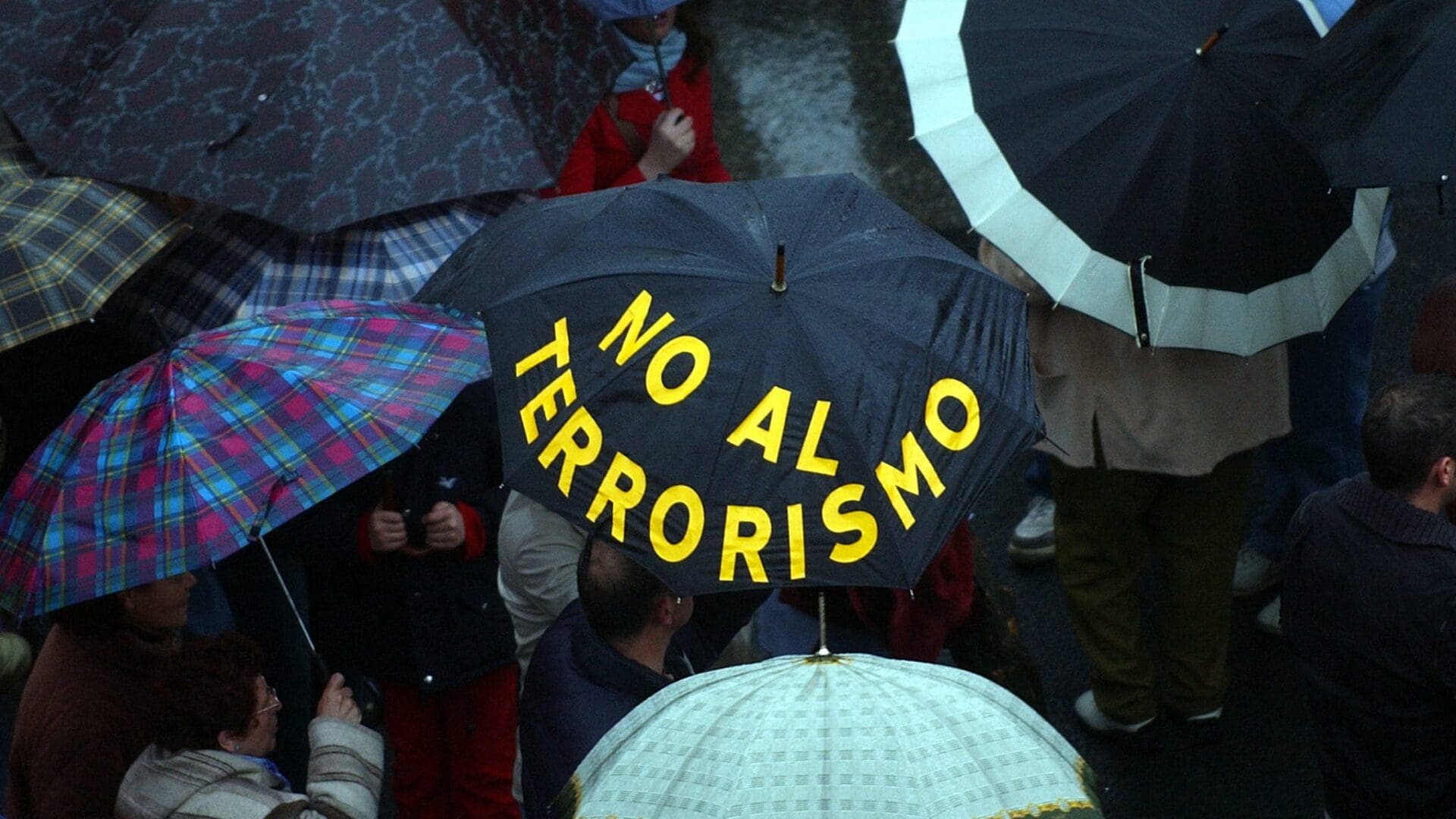Introduction
On 7 October 2023, Hamas forces, followed by a wave of Gazan civilians, entered Israel and what followed was carnage. Roughly 1200 Israeli casualties resulted, and 240 Israelis, men, women and children, were kidnapped and hidden in tunnels in Gaza. But what marked the attack most was its savagery. Israelis were murdered, some were burned alive, women were raped and some suffered sexual mutilation. The violence rose to a level of barbarity which even ISIS never approached.
What followed was a full-scale Israeli military operation, including massive bombing of civilian areas of northern Gaza, with southern Gaza soon to taste the same degree of Israeli military might. From the Israeli perspective, the operations are justified by the presence of Hamas tunnels beneath civilian areas, mosques, schools, and hospitals. Yet the pictures that of emerged of Palestinian human suffering have moved the world and resulted in a massive upsurge in both the West and the Islamic world of anti-Israel rage, and indeed of naked anti-Semitism. The global press has covered these anti-Israel demonstrations heavily, but perhaps most telling of the problem is a warning from the Israeli government that it is now dangerous for Israelis to travel to over 80 countries. Uniquely, Hungary is the only EU country that has banned any pro-Palestinian demonstrations.
The number of civilian deaths in Gaza as of 8 December 2023 is stunning. Western and Israeli concur that it is roughly 17,000, many of them children, have been killed. In real terms, this amounts to 1 in every 200 Gazans killed by Israeli forces. Civilian deaths in Gaza, by any reckoning, are far out of proportion to the number of Israeli deaths, however, are justified with the objective of defeating and decimating Hamas.
This article, however, is not about the war in Gaza. Rather, its focus is a nearly two millennia old pattern of terrorist violence which is consciously intended to provoke governments to overreact, and in the process cause so many civilian casualties and such a level of suffering to the innocent that the population is forced to become involved in the conflict and thus swell the ranks of the terrorist groups. Moreover, in the world of the 21st century where events are broadcast with the ease of uploading a cell phone video, such government actions are beamed around the world virtually as they happen. The results are predictable, and not only the Israelis, but Jews around the world have become demonized and, in some cases, targeted.
We have seen all this before.
What is Terrorism?
Every class on terrorism begins with a few simple truths. First and foremost, terrorism is oppositional—it is a tactic employed by the weak against the strong. Terrorist groups are small, their members few, and they have no hope of opposing a government by conventional means. With time and relative success, with success measured by survival, they may develop the means to wage a rural insurgency, but this comes at the cost of withdrawing to the hinterlands, far from the urban centers. Governments by contrast wield overwhelming power; armies, intelligence services, communications media, and the bureaucracy of state functions which foster the means of control and create in the population a significant degree of dependance on the state. With these advantages, governments can counter the threat of opposition, and of terrorism, with state terror in the form of secret police, prisons, the threat of torture and when needed or expedient, state sanctioned killing.[1]
Terrorist acts, great or small, are forms of violent theater which convey messages to multiple audiences.
Governments are the primary audiences for terrorist messaging, but they are far from the only target. The terrorist act is a recruiting tool. It encourages the likeminded to join terrorist groups, but of far greater import it seeks to force the civilian population to make a choice. Apathy, not government repression, is the greatest enemy of terrorist groups. In this, ironically, state terror is as great a recruiting tool as is the terrorist act. Terrorism and counterterrorism are more comfortably viewed on television and social media, much like a football game, where people can cheer for one side or the other at little risk to themselves. The primary goal of every terrorist group is to force the public to abandon its apathy and choose a side. Which side is of less import than the simple act of involvement. Of the ensuing radicalization comes pervasive violence, and from the resulting chaos are revolutions born.
As terrorist groups grow in size they grow in complexity and sophistication. At its apex, in groups like the early Muslim Brotherhood in Egypt and even more successful, Hizbollah in Lebanon, they can develop into a virtual state within a state. They take advantage of government failures by providing services including medical services, education, and even local infrastructure, repairing roads, building houses, and providing financial resources to the urban and rural poor.[2] They can develop legal parliamentary representation, insurgent and even conventional military forces, and they can take on many of the functions that failed governments cannot or will not undertake. Very few terrorist groups rise to this level, but it is the ultimate marker of the success of terrorist messaging for those elite organizations that can reach this level.
What is hardest for governments, the media and observers alike to comprehend is that the victims of terrorism are neither target nor audience. Victims are simply that, victims, whose greatest utility is measured by the randomness of the act. Terrorist attacks on government leaders or the centers of power reduce the audiences beyond the government to mere spectators with little involvement beyond general sympathy for one side or the other. The random attack on civilians invites the public to uniquely identify with the victims. There but for the grace of God I could have gone, and therefore I am afraid. The victims of terrorism therefore are the canvas on which the terrorist message is drawn. Still photographs or short video clips, such as the plane flying into the World Trade Center in 2001 or the photo of the ruined façade of the Alfred P. Murrah Building in Oklahoma City in April 1995 speak volumes to multiple audiences around the world.
Inducing fear in the public is an effective tool, but it is only a step. It embeds the cause and the group deep into the public consciousness, but fear of the terrorist group is hardly an ideal recruiting tool. What is needed is to provoke the government to overreact, to engage in a campaign of terror which frightens the public more than does the terrorist group, or better, to undertake a campaign of military or police violence so great that people flock to the terrorist banner as a means of self-defense or simply desperation. The efficacy of the tactic was first discovered by the Sicari; a Jewish movement in the first century that targeted both the Jewish authorities and the Roman government. It has been the tactic of first resort for the last two millennia of terrorist history.[3]
Terrorist Tactics
Terrorism is a copycat league. A successful tactic will be borrowed and adapted by the global audience of likeminded groups who, seeing a tactic succeed in one place, will copy the idea and try it for themselves.[4] Ideological or religious differences mean nothing in this respect.
If a tactic works for a communist or left wing group, fascist or right wing groups feel no hesitation whatever in borrowing it for their own purposes.
For this reason, the evolution of terrorist tactics come in waves, with each wave of terrorism, each in its own time and with whatever technological innovations have occurred in the world make their attacks more effective.
In his groundbreaking four waves of modern terrorism theory, David C. Rapoport identified four waves of modern terrorism; anarchists, national liberation, new left and religious, each with signature tactics that were shared throughout the wave.[5] Anarchists used bombs and assassination, the wave of national liberation used urban and rural guerilla warfare, the new left adopted hijacking planes as its signature tactic, while the religious wave used mass casualty attacks when possible and a range of methods of lethal force when not.
Each terrorist wave provoked government reactions which enjoyed varying degrees of success and were employed with vastly different levels of ferocity. The anarchist wave shocked authorities in the late 19th and early 20th centuries. Governments reacted in a relatively restrained manner with counterterrorism centered primarily on the terrorists themselves rather than on the larger population. In the US there were a series of raids that became popularly known as Palmer raids, which were named for the Attorney General A. Mitchell Palmer., These culminated in the passage of the Espionage Act in 1917, which was more popularly called the Sedition Act when it was amended in 1918. The Act led to the arrest and conviction of roughly 1,000 anarchists, communists and socialists. This was roundly applauded by the public, which approved, but were involved only as passive spectators. Moreover, that only 1,000 people were convicted under the Sedition Act testifies to the narrow focus of the government’s response.[6]
The Russian response was predictably more robust, but as Russia was the epicenter of anarchist thought, this is not surprising. Mass arrests, imprisonment and banishment to the Gulag Archipelago, the network of Siberian prisons, was common. However, unlike the case of the United States, the Tsarist government was more concerned with the growing revolutionary fervor that in 1917 would bring the Bolsheviks to power than with dealing with the anarchist groups. Again however, the response, such as it was, was carefully targeted and did not overly concern the civilian population.[7]
European governments followed the same counterterrorism pattern until the outbreak of World War I, itself triggered in part by the assassination of the Archduke Franz Ferdinand by an anarchist, effectively ended the anarchist wave.
The wave of national liberation was a more complex affair, taking place throughout the colonized world and involving European governments, particularly England, France and Portugal. Each western state pursued different strategies, and it was in this wave that collective punishments and heavy civilian casualties did take place. The Europeans possessed a marked technological advantage and could call on professional armies. The colonized peoples had numbers, while the oppositional groups, primarily insurgencies, had the advantage of time and terrain, as well as popular backing. As casualties rose, so too did the insurgents gain popular support. Once again it was a world war that so decimated Europe that the success of the wave of national liberation inevitably succeeded and a number of new states were born in Africa and Asia, while others, long established but never consolidated in the form of the modern nation state such as India, gained independence.[8]
The new left wave of the 1960s challenged Western governments on a number of levels. The new left in Western Europe constituted a mass movement, and in some senses constituted the radical fringe of a generational revolt. Opposition to the Vietnam War catalyzed the movement, and in the US the cause of civil rights was a part of the conflict as well. Governments reacted by handling the challenge with kid gloves. The number of actual terrorists was quite small for one thing. For another, the terrorist ethos of the time, with the exception of a few targeted assassinations. was to avoid unnecessary civilian casualties. Indeed, in perhaps the signature event of the time, the hijacking of five planes by the Popular Front for the Liberation of Palestine (PFLP) in 1970, care was taken that not a single passenger was harmed.[9] Terrorism in the new left wave was a media, not a mass casualty, event. Moreover, in the last analysis, the new left wave was composed of young, highly educated middle-class and affluent students who were, not incidentally, the piers if not the actual children of those in the security services. The US withdrew from Vietnam in 1973 and the wave of new left terrorism subsided not long after.[10]
The wave of religious terrorism was triggered by the Iranian Revolution in 1979. It was far from the beginning of religiously based violence and terrorism, but its importance was that, against all odds, it was successful. Waves of attacks soon rocked the Islamic world, but the violence was hardly confined to the Islamic world. Right wing violence took place in the US and Europe, Hindu violence in India, and much more. The religious wave ushered in the era of mass casualties, bringing an ever greater response from impacted governments. However, the turning point was the Al Qaeda attacks on New York and Washington DC that took place on September 11, 2001. This attack launched the American led War on Terror and the invasion of Afghanistan soon followed by the even more disastrous invasion of Iraq in 2003.
Before its withdrawal from Afghanistan in 2023 culminating the longest war in American history—a war that like the Soviets and British before them ended in ignominious failure—the number of casualties was appalling:
American service members killed in Afghanistan through April: 2,448
U.S. contractors: 3,846
Afghan national military and police: 66,000
Other allied service members, including from other NATO member states: 1,144
Afghan civilians: 47,245
Taliban and other opposition fighters: 51,191
Aid workers: 444[11]
Total: 172,318
The number maimed and injured cannot be reliably estimated save that it dwarfs the number of lethal casualties.
For all the blood and treasure expended, the Taliban, driven from power by the American invasion that commenced on October 7, 2001, shortly after the US withdrawal the Taliban opened an offensive that soon conquered the country, returning in triumph to Kabul. Their numbers had been replenished and much augmented by civilians—from a variety of tribes not just the Pashtoon—who were either radicalized by the killings attributed to Western forces or simply wanting to eject the foreigners, kafirs all, from the nation.[12]
If the invasion of Afghanistan was a political, military and economic failure, the invasion of Iraq was a fiasco of the highest order.
The country under the brutal leadership of Sadam Hussein and the Ba’ath Party was relatively stable with only the Kurdish insurgency presenting a serious threat. Sadam’s fall unleashed what Iraqis then and now termed ‘hell’. Religious communities that had coexisted peacefully soon fell upon each other and sectarian war between Sunnis and Shi’a soon dwarfed all other conflicts in the country. Out of the chaos emerged Daesh and killing, including sexual violence and sexual slavery, ravaged much of the nation and soon became a threat to the world community.
The war, which cost an estimated $1.6 trillion to wage, resulted in an estimated 200,000 Iraqi civilian deaths not counting those killed by Daesh, the Kurds or other sectarian forces, and 4,492 American service members killed, and 32,292 Americans wounded.[13] As in Afghanistan, the Americans left in defeat and once again the use of American force, considered far disproportionate to the threats, radicalized the public and served as a powerful recruiting tool for Daesh, Al Qaeda and a variety of equally lethal Shi’ite militias.[14]
In David Rapoport’s model, each wave of terrorism lasted roughly 40 years, and each subsided and was eventually replaced by a new wave with different ideologies, goals and signature tactics. The religious wave was different. It has been nearly 45 years, and the wave shows no signs of abating. Scholars have argued about why this should be, but the overreaction of the US War on Terror shares much of the blame. By inflicting heavy casualties and causing much suffering among innocent civilian populations, grievances were set and the terrorist groups that were the original targets of the conflict—groups that were actually quite small in numbers—were fed with a continuous stream of recruits not only from the conflict zones, but from around the globe.[15]
Conclusion
The patterns that emerge from these examples, drawn from 150 years of terrorism and counterterrorism, are clear. When a tactic works, it is copied and adapted to new times and new situations. From the Kharajites to the Crusaders, attacks on civilians, women and children strike terror and provoke governments to react. When governments overreact and kill large numbers of civilians, regardless of the provocation, governments lose support, lose legitimacy, and in the modern world, soon find both popular opinion and later the world community will turn against them, making ultimate defeat inevitable.
[1] A good introductory text on political terrorism is Bruce Hoffman, Inside Terrorism, Rev. and expanded ed. (New York: Columbia University Press, 2006). For the history of terrorism, see David C. Rapoport, Waves of global terrorism: from 1880 to the present (New York: Columbia University Press, 2022).
[2] On the early Brotherhood, the Ur text remains Richard Paul Mitchell, The society of the Muslim Brothers (New York: Oxford University Press, 1993). On Hizballah, Martin Kramer, ‘Redeeming Jerusalem: The Pan-Islamic Premise of Hizballah’, in The Iranian Revolution and the Muslim World, ed. David Menashri (New York: Routledge, 2019), 105-30. Matthew Levitt, Hezbollah: The global footprint of Lebanon’s party of God (Washington, DC: Georgetown University Press, 2015).
[3] Randall D Law, The Routledge history of terrorism (New York: Routledge, 2015). Jeffrey Kaplan, ‘Nothing is true, everything is permitted: Premodern religious terrorism,’ Terrorism and political violence 31, no. 5 (2019): 1070-95. Jeffrey Kaplan, Apocalypse, revolution and terrorism: from the Sicari to the American revolt against the modern world (New York: Routledge, 2019).
[4] Yannick Veilleux-Lepage, How terror evolves: the emergence and spread of terrorist techniques (New York: Rowman & Littlefield Publishers, 2020).
[5] Rapoport, Waves of global terrorism: from 1880 to the present. Jeffrey Kaplan, ‘Waves of political terrorism, revised and updated’, in Oxford Research Encyclopedia of Politics (2021), https://oxfordre.com/politics/display/10.1093/acrefore/9780190228637.001.0001/acrefore-37-e-24.
[6] On this history, see Nick Shepley, The Palmer Raids and the Red Scare: 1918-1920: Justice and Liberty for All, 2 vols. (Luton: Andrews UK Limited, 2015). Paul Avrich and Paul Avrich Collection (Library of Congress), Anarchist voices : an oral history of anarchism in America (Princeton,: Princeton University Press, 1995).
[7] Paul Avrich, Russian Anarchists (Princeton: Princeton University Press, 2015).
[8] Frederick Cooper, Colonialism in question: Theory, knowledge, history (Berkely: Univ of California Press, 2005). Wolfgang Reinhard, A short history of colonialism (Manchester: Manchester University Press Manchester, 2011).
[9] Alex Hobson, ‘Creating a World Stage: Revolution Airport and the Illusion of Power,’ The International History Review 42, no. 5 (2020): 930-50.
[10] Ted Robert Gurr, ‘Some characteristics of political terrorism in the 1960s,’ in The Politics of Terrorism, Third Edition, ed. Michael Stohl (Boca Raton: CRC Press, 2020), 31-57. Christina Gerhardt, Screening the Red Army Faction : historical and cultural memory (New York: Bloomsbury Academic, 2018).
[11] Ellen Knickmeyer, ‘Costs of the Afghanistan war, in lives and dollars,’ AP, August 17, 2021, https://apnews.com/article/middle-east-business-afghanistan-43d8f53b35e80ec18c130cd683e1a38f.
[12] C William Walldorf Jr, ‘Narratives and war: Explaining the length and end of US military operations in Afghanistan’,International Security 47, no. 1 (2022): 93-138. Marnie Ritchie, ‘War misguidance: Visualizing quagmire in the US War in Afghanistan,’ Media, War & Conflict 16, no. 1 (2023): 63-81. Joseph J Collins, ‘Defeat in Afghanistan: An Autopsy,’ The US Army War College Quarterly: Parameters 53, no. 1 (2023): 8-28.
[13] Nicholas Anastacio and Mark Murray, ‘The Iraq war — by the numbers,’ NBC News, March 20, 2023, https://www.nbcnews.com/meet-the-press/meetthepressblog/iraq-war-numbers-rcna75762.
[14] Hal Brands, ‘Blundering Into Baghdad: The Right-and Wrong-Lessons of the Iraq War,’ Foreign Affairs 102(2023): 102-76. eds. John A. Gentry and William M. Nolte, After the Wars: International Lessons From the U.S. Wars in Iraq and Afghanistan (Bethesda: National Intelligence University Press, 2018).
[15] Daniel Byman, Road warriors: Foreign fighters in the armies of jihad (New York: Oxford University Press, 2019).
Related articles:







